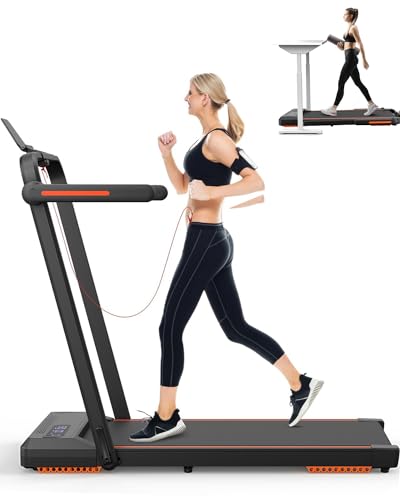sale-on-treadmills7665
sale-on-treadmills7665
What Experts In The Field Of Walking Machine Want You To Be Able To

The Walking Machine: A Comprehensive Guide to Your Fitness Companion
In today’s fast-paced world, where time is a luxury, preserving a consistent exercise routine can be a difficulty. For many, a walking machine— frequently called a treadmill— works as an ideal physical fitness companion. This post offers an in-depth take a look at walking machines, including their benefits, types, maintenance tips, and often asked concerns.
Why Choose a Walking Machine?
Walking machines offer a practical and effective method to include cardiovascular exercise into life. Here are several essential advantages:

- Convenience: Walking machines permit people to exercise anytime, regardless of weather condition conditions or time constraints. They are best for hectic schedules.
- Adaptability: Users can walk, jog, or run at their own pace and intensity.
- Security: Walking machines provide a lower risk of injury compared to outside walking or running, particularly for novices or those recuperating from injuries.
- Tracking Progress: Many treadmills included integrated displays that track metrics like speed, distance, and calories burned.
Kinds Of Walking Machines
When considering a walking machine, it’s important to choose the best type based on individual fitness goals and space constraints. Below are the main kinds of walking machines:
| Type | Description |
|---|---|
| Handbook Treadmills | These machines do not have a motor, and users require to stroll or run to rotate the belt. |
| Electric Treadmills | Powered by an electric motor, permitting users to set the speed and slope easily. |
| Folding Treadmills | Designed for simple storage, these treadmills can be folded up when not in use. |
| Desk Treadmills for the home | Suitable for a dual work and workout environment, these compact machines permit walking while working. |
| Slope Trainers | These permit users to simulate uphill walking, enhancing exercise intensity and calorie burn. |
Picking the Right Walking Machine
Choosing the right walking machine can significantly impact motivation and effectiveness. Here are some aspects to think about:
Key Features to Look For
- Motor Power: A powerful motor guarantees a smooth and consistent workout. For occasional walkers, a 1.5 HP motor is normally enough; for much heavier use, try to find 3.0 HP and above.
- Belt Size: A larger and longer belt provides more area for a comfy stride. Standard sizes range from 16 inches large and 50 inches long.
- Slope Options: Adjustable incline settings can mimic walking or running uphill, increasing the intensity of the exercise.
- Shock Absorption: Good shock absorption reduces the risk of joint injuries and boosts comfort.
- Console Features: Look for integrated exercises, heart rate displays, and connection functions like Bluetooth for a more appealing experience.
Spending plan Considerations
Walking machines can be found in a wide variety of costs, depending on features and building and construction quality. Here’s a rough budget plan breakdown:
| Price Range | Functions |
|---|---|
| Under ₤ 300 | Standard handbook or small electric treadmills with restricted functions. |
| ₤ 300 — ₤ 700 | More advanced electric treadmills with incline, medium power motors, and better guarantees. |
| ₤ 700 — ₤ 1500 | Premium electric treadmills with bigger integrated displays, comprehensive functions, and guarantees. |
| ₤ 1500 and above | High-end designs using sophisticated innovation, functions, and long lasting building for major physical fitness enthusiasts. |
Maintenance Tips for Your Walking Machine
To ensure longevity and ideal efficiency of a walking machine, think about the following maintenance ideas:
- Regular Cleaning: Dust and sweat can accumulate on the machine and the belt. Clean down the surfaces and clean the belt frequently.
- Lubrication: Depending on the model, lubing the running belt regularly can avoid wear and tear. Check the producer guidelines for advised lubrication schedules.
- Examination: Periodically check the machine for loose screws or used parts. Tighten up and change as needed.
- Calibration: Occasionally, check the calibration of your machine’s metrics to guarantee they provide precise information.
- Proper Use: Follow the producer’s recommendations for weight limitations and operational standards.
FAQs About Walking Machines
1. Are walking machines a great workout?
Yes, walking machines offer an outstanding cardiovascular workout, can help with weight reduction, and enhance total health.
2. How often should I utilize a walking machine?
Objective for at least 150 minutes of moderate-intensity aerobic activity per week, which can quickly be accomplished with routine sessions on a walking machine.
3. Can I lose weight on a walking machine?
Yes, integrating a walking machine regimen into a healthy diet can promote weight loss, specifically if combined with periods and incline training.
4. Is it safe for seniors to utilize a walking machine?
Yes, walking machines can be safe for senior citizens with low-impact settings and safety functions like handrails. Nevertheless, people ought to seek advice from their healthcare provider before beginning any workout program.
5. What’s the distinction between a treadmill and a walking machine?
The term «walking machine» normally refers to a treadmill intended for walking, while «treadmill» can refer to machines used for different strengths, including running.
With their versatility and convenience, walking machines can considerably improve one’s physical fitness journey. By carefully choosing the right type, ensuring correct maintenance, and integrating various workout methods, users can optimize their walking machine’s advantages. Similar to any exercise routine, consistency is essential to achieving lasting physical fitness outcomes.


